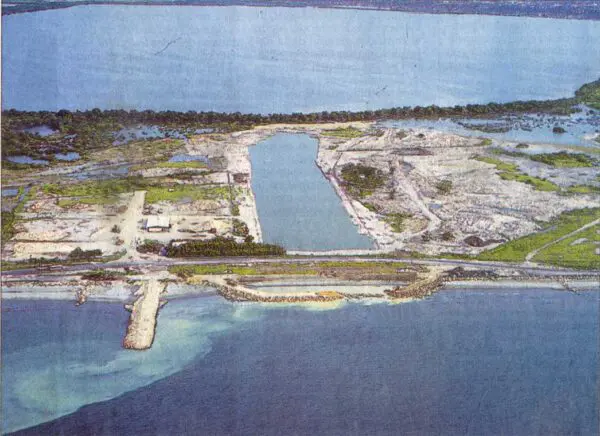Ineke Steinhauer
Senior Advisor Environmental and Social Assessment


The NCEA issued four advisory reviews of various documents that were prepared for construction of a tidal inlet for a lagoon near Cartagena. These documents included the EIA for the project and its Environmental Monitoring Plan (EMP).
The joint review was carried out according to the Terms of Reference adopted by CARDIQUE and an additional checklist prepared by the Commission. In June 1996 a visit was made to the site in Colombia and the advisory review submitted. Both CARDIQUE and the Commission concluded that the EIS dealt insufficiently with a number of points relevant to the decision making and recommended that a supplement be prepared. The supplement was, again, reviewed by both bodies in November 1996, this time in the Netherlands, and CARDIQUE sent a representative to the Netherlands for this purpose. The conclusion of the additional review was that there was now sufficient information to allow environmental considerations to play a full part in the decision making. Recommendations were made for attaching a number of conditions to the environmental permit. The environmental permit states that the activity must comply with all measures and actions proposed in the Environmental Management Plan and the recommendations in the additional advisory review by the Commission and CARDIQUE (which forms an integral part of the permit). CARDIQUE is allowed to prescribe additional mitigating or compensating measures if the situation so requires.
The preparation for the execution of the project started early 1999. In light of this development, the Minister for Development Cooperation, endorsed by the Colombian Ministry of Transport, requested the Commission to conduct the project, environmentally and technically, by re-activating the collaboration with CARDIQUE in the evaluation of the review reports which will be drawn up during the execution of the works. In March 1999 theCommission and CARDIQUE received the report containing the monitoring programme: ‘Programa de Monitoreo Ambiental’, febrero 1999. The environmental licence of CARDIQUE and the letters of the Colombian and Netherlands Ministries formed the motive for a first advisory review of the environmental monitoring programme, which was published in June 1999. This review was endorsed by CARDIQUE.
While re-activating the collaboration with CARDIQUE, the Commission and CARDIQUE experienced that collaboration at two widely separated geographical locations makes effective interaction and exchange of ideas very difficult. It was proposed to plan a visit to Cartagena when the results of first sampling-campaigns (executed by the contractor) would be available. On the basis of these results and on basis of the first advisory review of June 1999, a final monitoring strategy could then be determined. Site visit took place in October 1999.
The main findings and recommendations of the site visit have been thoroughly discussed during a debriefing session in Cartagena with representatives of the Ministry of Transport and the Netherlands Embassy. The Commission re-emphasized that clarity on the institutional setting after project completion has to be provided, meaning that an authority responsible for management, operation and maintenance has to be appointed before project completion. The Commission also mentioned that the timely implementation of the ‘marine outfall’ project (complementary to the Tidal inlet project) remains very urgent. Finally the Commission made detailed observations in relation to the contents and feasibility of the environmental licence and the construction permit. Specific advice was provided on the results of a monitoring campaign on water quality and the institutional capacity of CARDIQUE.
Ministrerio de Transporte - Colombia
Corporación Autónoma Regional del Canal del Dique -CARDIQUE, Dutch Ministry of Foreign Affairs